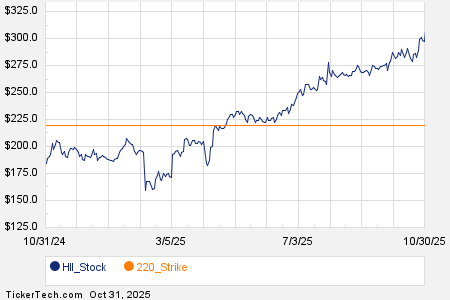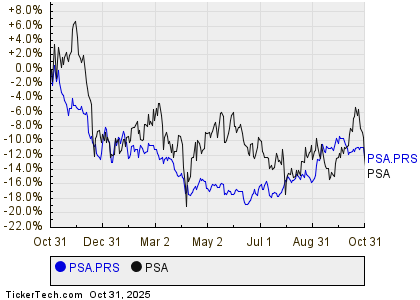Contributing to a 401(k) is one of the easiest and most effective ways to save for retirement.
The 401(k) has a contribution limit of $23,500 per year in 2025, while IRAs allow only $7,000 annually. Setting up direct transfers from your paycheck to your 401(k) can put your savings on autopilot, enabling you to increase your savings over time.
Where should you invest $1,000 right now? Our analysis has revealed the 10 best stocks to consider at this moment. Learn More »
So, what is the average amount Americans have saved in their 401(k)? That figure varies based on age, career length, and salary range. Regardless of your current balance, there’s a simple method to enhance your savings.

Image source: Getty Images.
Average 401(k) Balances by Salary
Vanguard’s annual report, How America Saves, provides insight into the financial health of Americans, highlighting the average and median 401(k) balances among their participants.
According to the latest 2024 report, the average 401(k) balance is $134,128, while the median amount is only $35,286. However, these figures vary significantly when broken down by salary level.
| Annual Income | Average 401(k) Balance | Median 401(k) Balance |
|---|---|---|
| Under $15,000 | $24,175 | $3,691 |
| $15,000 to $29,999 | $18,610 | $6,142 |
| $30,000 to $49,999 | $25,096 | $10,072 |
| $50,000 to $74,999 | $59,273 | $24,939 |
| $75,000 to $99,999 | $106,875 | $51,073 |
| $100,000 to $149,999 | $178,818 | $91,323 |
| $150,000 and higher | $336,470 | $188,678 |
Data source: Vanguard. Table by author.
While average figures can be inflated by high earners, the median values offer a more realistic view of the typical American’s savings. This middle number reflects where half the individuals have more, and half have less.
A Simple Way to Boost Your 401(k) Savings
Among various strategies to enhance your savings, taking advantage of employer matching contributions is one of the simplest. If your plan includes this benefit, it can effectively double your contributions with minimal effort on your part.
The median wage for U.S. workers is $1,159 weekly, translating to over $60,000 annually, based on 2024 data from the Bureau of Labor Statistics. If your employer matches 100% of your contributions up to 3% of your salary, that would generate $1,800 in matching funds each year.
Let’s look at how your savings could grow if you contributed $1,800 annually with the employer match versus contributing only $1,500 with a similar match.
| Number of Years | Total Savings: Contributing $1,500 per Year + $1,500 Employer Match | Total Savings: Contributing $1,800 per Year + $1,800 Employer Match |
|---|---|---|
| 20 | $172,000 | $206,000 |
| 25 | $295,000 | $354,000 |
| 30 | $493,000 | $592,000 |
| 35 | $813,000 | $976,000 |
Data source: Author’s calculations via investor.gov. Assumes a 10% average annual return on investment.
In this scenario, saving just $300 more each year (along with an additional $300 in employer contributions) could result in approximately $163,000 more in total savings over 35 years.
As individuals advance in their careers, their income typically increases too. Since employer matches are usually a percentage of salary, higher wages lead to greater matching contributions, allowing easier growth of your retirement savings over time.
Regardless of whether your savings exceed or fall below average figures for your salary range, increasing your contributions or taking advantage of company matches can significantly enhance your retirement savings by potentially hundreds of thousands of dollars.
The $22,924 Social Security Bonus Often Overlooked
If you’re like many Americans, you may be behind in your retirement savings. However, certain little-known “Social Security secrets” can help enhance your retirement income. For instance, one simple tactic could net you an additional $22,924 each year! By learning how to maximize your Social Security benefits, you could retire with more confidence and peace of mind. Click here to discover these strategies.
View the “Social Security secrets” »
The Motley Fool has a disclosure policy.
The views and opinions expressed herein are solely those of the author and do not necessarily reflect those of Nasdaq, Inc.







